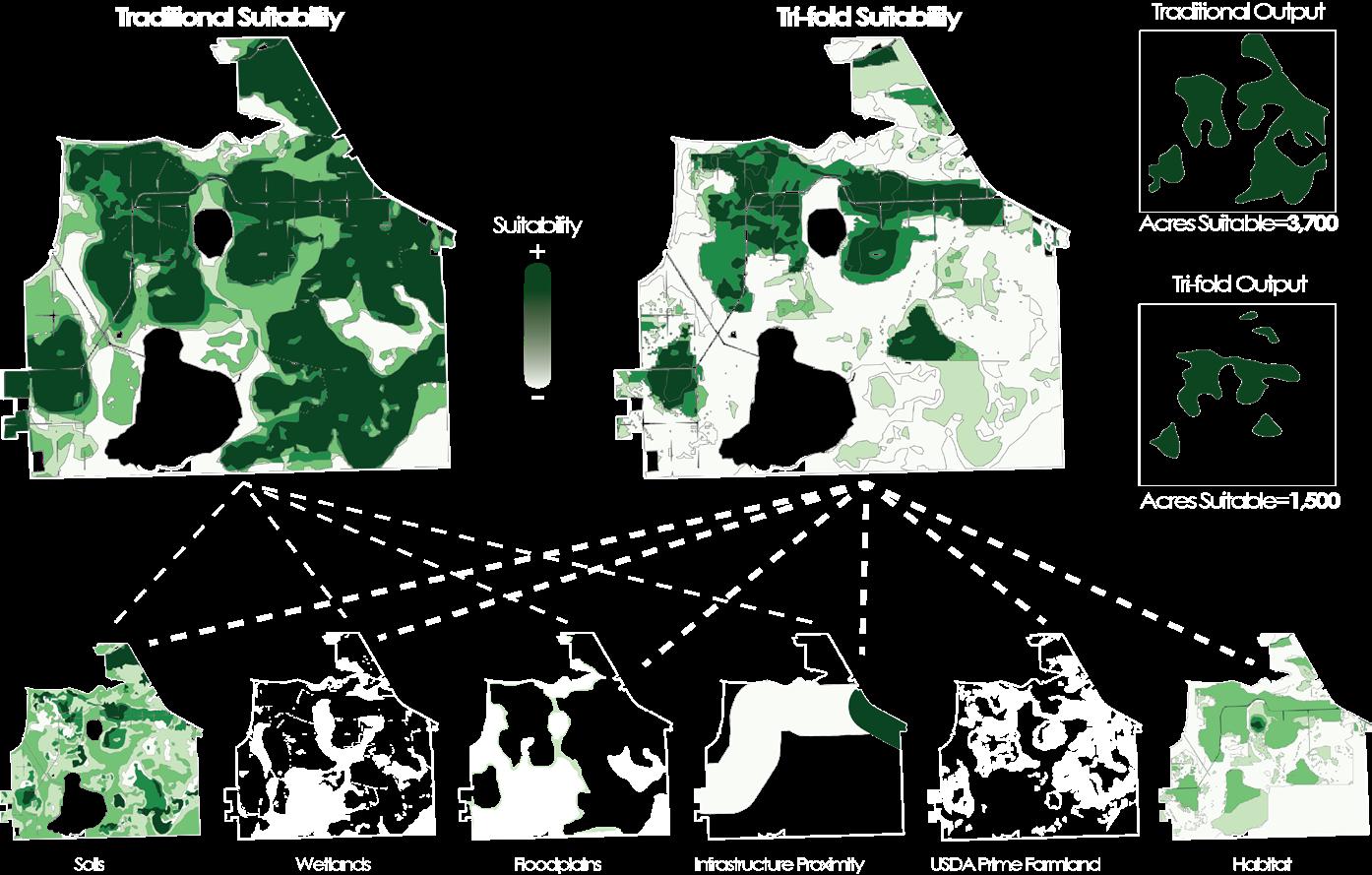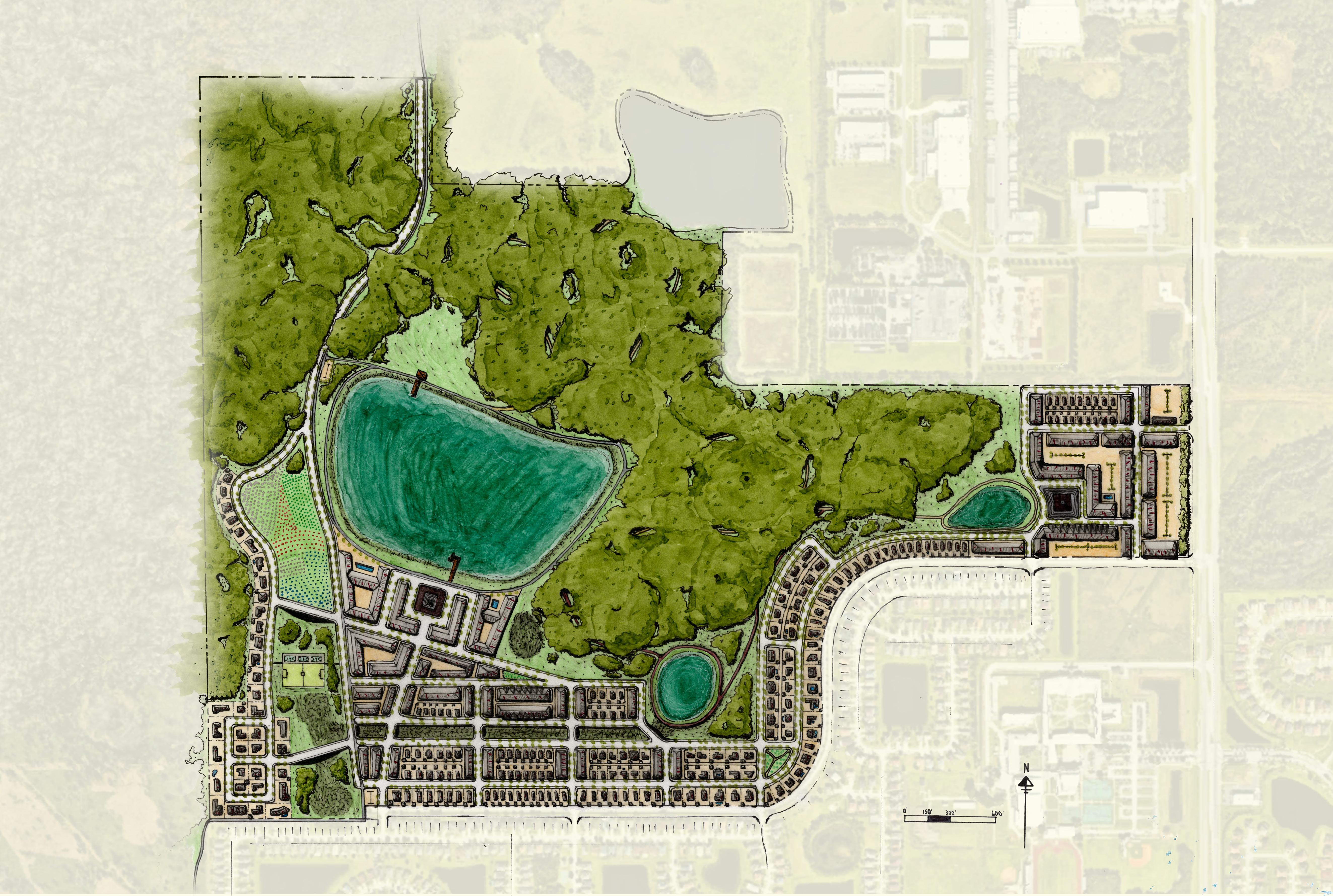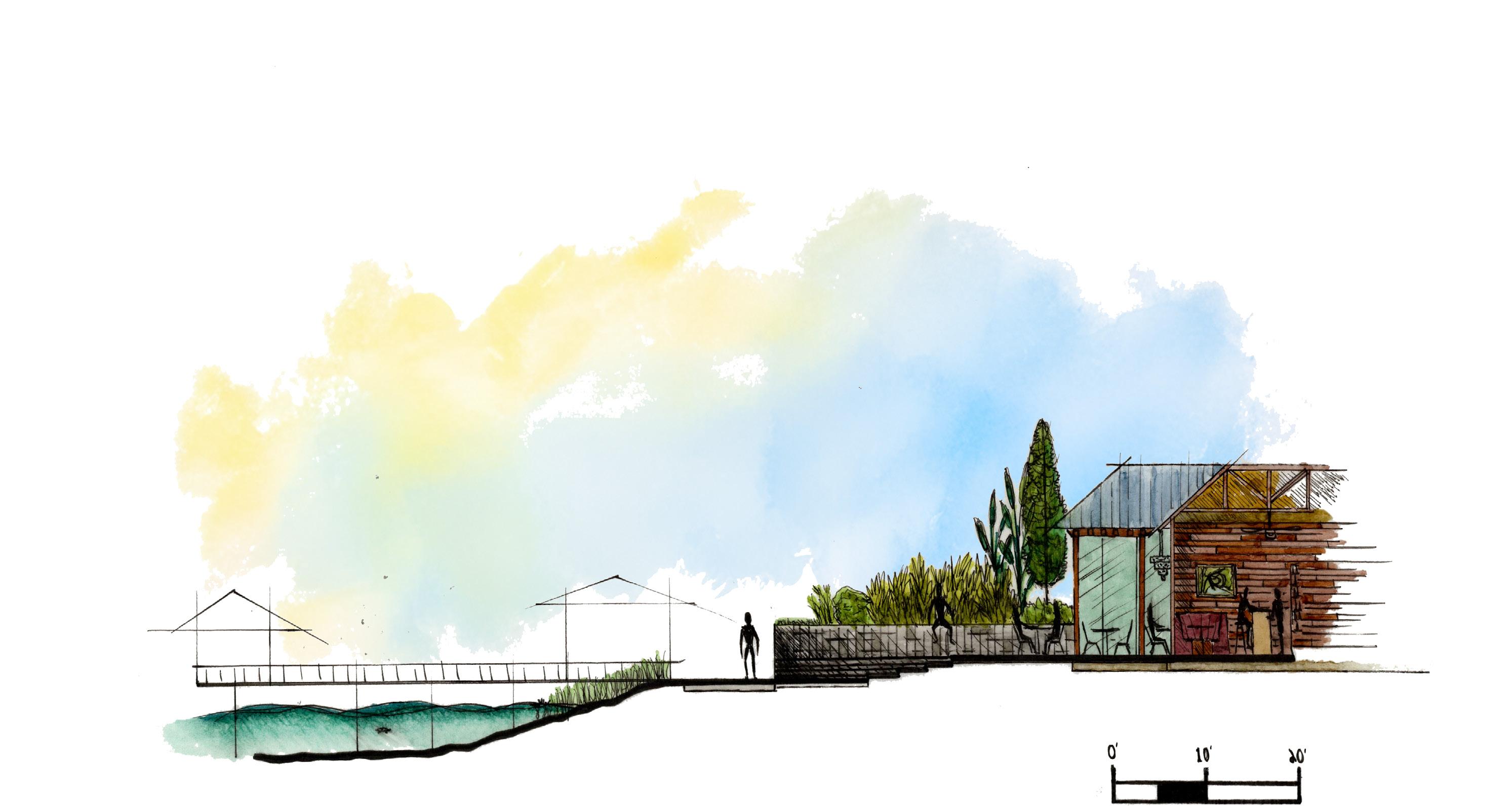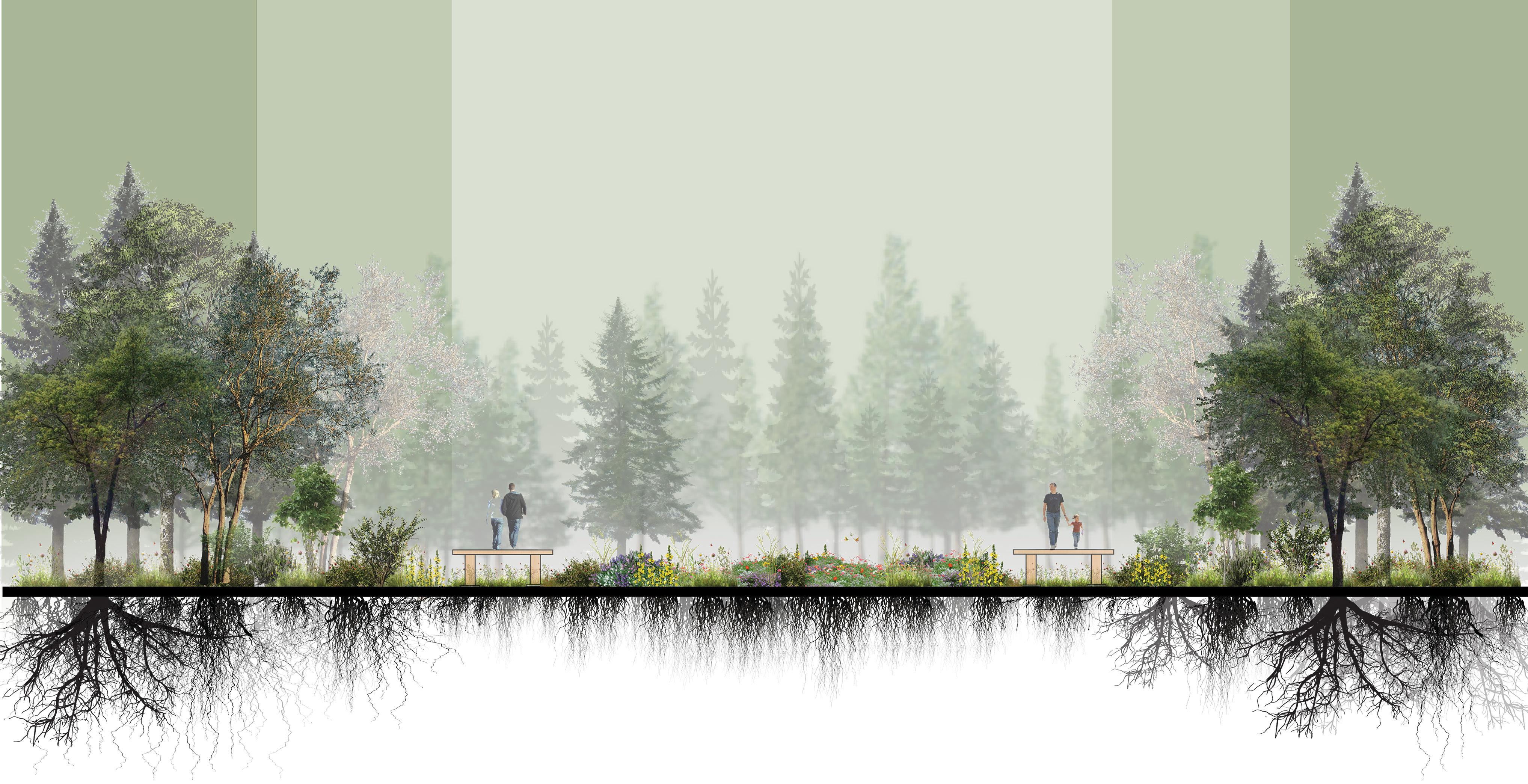Marc W. Grossberg
MLA Portfolio

Ethos
I come to landscape architecture with an academic background in agronomy, anthropology, and ecology as well as an applied background in restoration ecology and horticulture. I infuse those realms of knowledge in my designs in the pursuit of a more sustainable and resilient world. After enough time spent learning the details of the many existential problems we face, I realized that I need to sit at the table with those making land use decisions, to be in a position myself to help guide those decisions. I don’t want to just ring the alarm bell. I want to design and build solutions. Food insecurity, disconnected communities, loss of biodiversity, climate change; the solutions are intertwined within the way we design our built environment and manage our natural resources. I believe that through designed landscapes we can address the issues of our time. I believe that we can regenerate the biosphere, strengthen our communities, and enhance our well-being through a holistic approach to design and planning. It is to this end that I specialize in the design of regenerative agroecosystems, environmental planning, community planning, ecosystem restorations, novel ecosystems, and nature based solutions.
STORMWATER
GROUNDWATER RECHARGE
STORMWATER


as V.I.T: PaTHWaYs TO REVIVal
The Talaab system of India is a vernacular approach to stormwater management that has been practiced for hundreds of years. As India has pushed toward industrial scale grey infrastructures the Talaab system has begun to experience a crisis of modernity. The preservation of these systems is called for, as they are not only effective infrastructure, but they are also cultural hot-spots for many communities. Our project seeks to situate the Talaab system within the global context of Traditional Ecological Knowledge (TEK), and more specifically as an example of a Vernacular Infrastructural Technology (VIT). By studying not just the Talaabs themselves, but the broader linage of similar cultural landscapes we find recurring themes of design strategies and of cultural support mechanisms which can be integrated into a framework for their revival and expansion.
Chinampas





sWIsHER FaRM PaRK aND PHOENIX aRTs DIsTRICT
A collaboratively produced development concept which envisions the Springfield Warehouse District in Jacksonville re-purposed as a pedestrian focused, biophilic, and resilient mixed use community. Pedestrian, ecology, and community were prioritized through careful planning of density with walkable circulation, green stormwater, and biodiversity weaved throughout. Swisher Farm Park at the north-eastern terminus of the site was my sole responsibility. The park serves as a public edible and ecological resource capable of meeting the annual produce needs of approximately 40 people through potential production of over 15,000lbs of fruits, nuts, and vegetables. All linework was drafted in AutoCAD, Swisher Farm Park modeled in Rhino, perspectives and plans rendered in Photoshop.

Intra-Corridor Agricultural Land
Conversion Hot-spots 2040

Intra-Corridor Agricultural Land
Conversion Hot-spots 2070


a laND REsPECTED
An analysis of conflicting land uses in Florida, and a proposal for achieving balance. How much agricultural land within the Fl Wildlife Corridor will be lost if sprawl continues at its current pattern; where are the areas most at risk to agricultural land conversion; can a more holistic approach to suitability analyses provide a pathway for conservation of both natural areas and working lands. The analysis identifies the counties where critical planning efforts should be focused, indicates that 20% of Florida’s crop land will be converted if such efforts are not initiated, and proposes a tri-fold suitability analysis that can reduce development pressure by 40%









A space for the interaction of earth, water, ecology, and human. Eleven earthen mounds of varying proportion scatter through a zone of ever shifting inundation. The mounds are sharply interjected with a monolithic gabian pier. As the water level fluctuates and the landscape wavers between lake and dry prairie the mounds undergo submersion and exposure allowing the humans, vegetation, and wildlife to shift their patterns of behavior in correspondence. The gabian structure provides a opportunity for human visitors to witness the dynamic ecology and serves as an anchor through the ever changing conditions. Though the gabian form will persevere, it will over time become consumed with vegetation. The grading plan was drafted in Civil3D, the site modeled in Rhino, the landscape rendered in Lumion then edited in Photoshop.

bOuRDaIN PaRK
My first original park design, created to honor the life and legacy of Anthony Bourdain, with food, ecology, and community as guiding priorities. Abstracted from the form of a quintessential Parisian streetscape, the design features an alley of canopy trees with pedestrian circulation through the center, and cafes positioned along each side. A shaded plaza for dining and socializing emerges from arcs of the pedestrian paths and overlooks a lowgrass meadow. Along the park’s southern and western edges, plantings inspired by Pine Flatwoods extend outward, with a timber bandshell bridging the pines and meadow. In the northeastern corner, an agroforest provides sustainably sourced food for the cafes and broader community. The linework for the masterplan and section was drafted by hand, while color was added in Photoshop.






A master-planned community bordering the Florida Wildlife Corridor just South-West of Orlando. Using the New Urbanist and Conservation Development frameworks this design leaves half the property to be conservation land while providing for the volume of dwelling units and commercial space allotted in the entitlement. The design prioritizes sustainability, resilience, and community through its emphasis on pedestrian transportation networks, hidden parking, biophilic stormwater retention, traditional and locally informed architectural character, and a 10 acre on site organic farm. All graphics were drafted and rendered by hand. The sky in section was created in Photoshop.


A bio-swale and greenspace enhancement for the University of Florida campus in Gainesville. Stormwater flow from the North-East section of campus is daylighted through a biophilic swale design inspired by North Florida Slope Forests. Native vegetation treats the stormwater while creating an amenity for passing students and habitat for local wildlife. Sensory experience is highlighted through sculptural installations embedded within the landscape and a custom bridge featuring a metal grate to allow light to penetrate to the swale, sound to raditate out, and dedicated paths for bikers and skaters who may otherwise dismount due to the texture of the metal grate. The linework was drafted in AutoCAD, the site was modeled in Rhino, then rendered in Photoshop.



GasWORKs PaRK PlaZa YEaR 2379
A plaza addition for Gasworks Park in Seattle. Thinking of how the space would change over time, the site is rendered as it might appear in the year 2379. In this future landscape where we did not step away from “business as usual” the plaza has become overgrown with vegetation typical of the NorthWestern United States. The presence of the central monolith signals to those who remain that this site is a significant vestige of a once great civilization now fallen to ruin. My first foray into 3D rendering, the site and its landscape elements were modeled in Rhino, rendered in Lumion, then edited in Photoshop.



